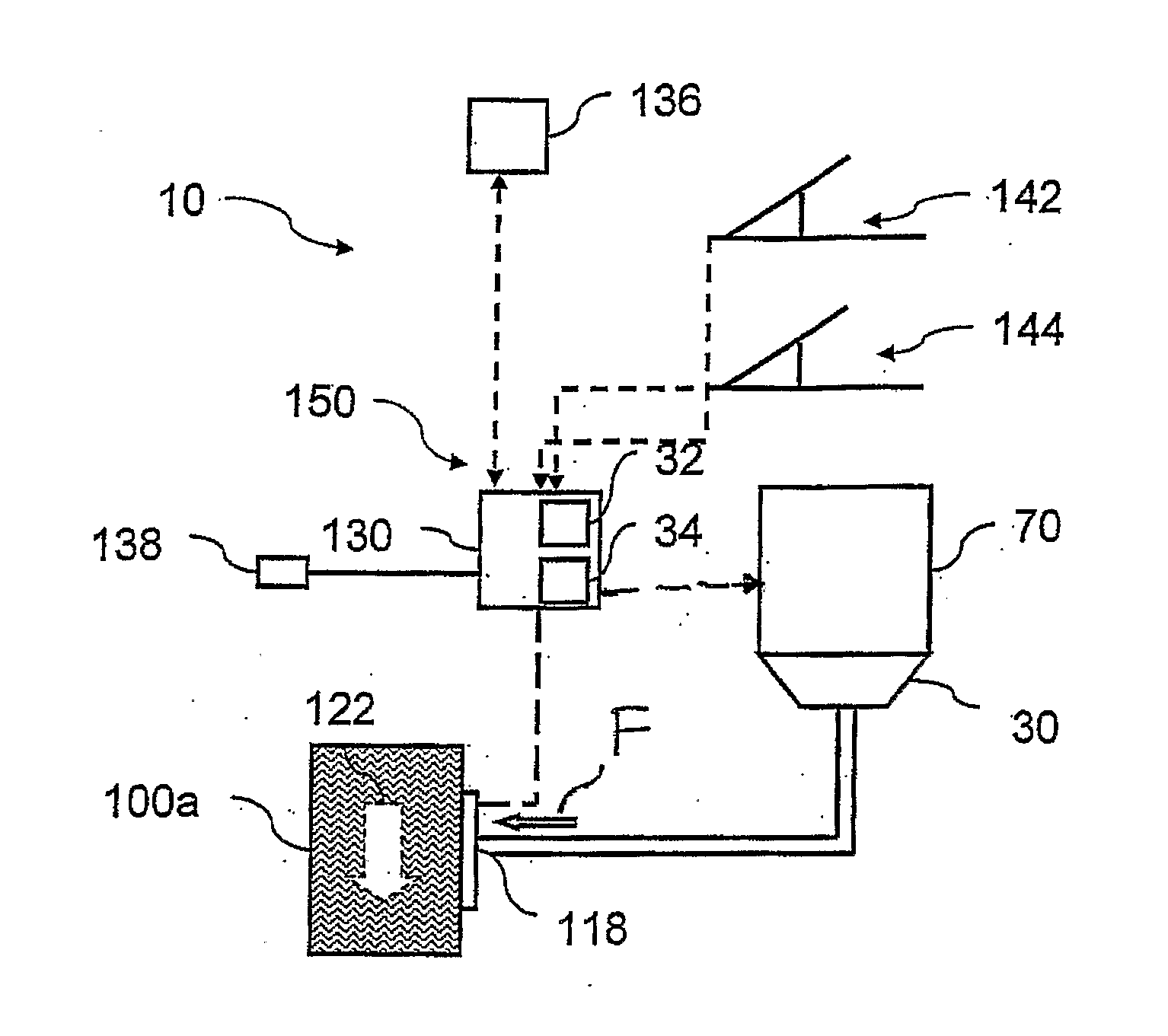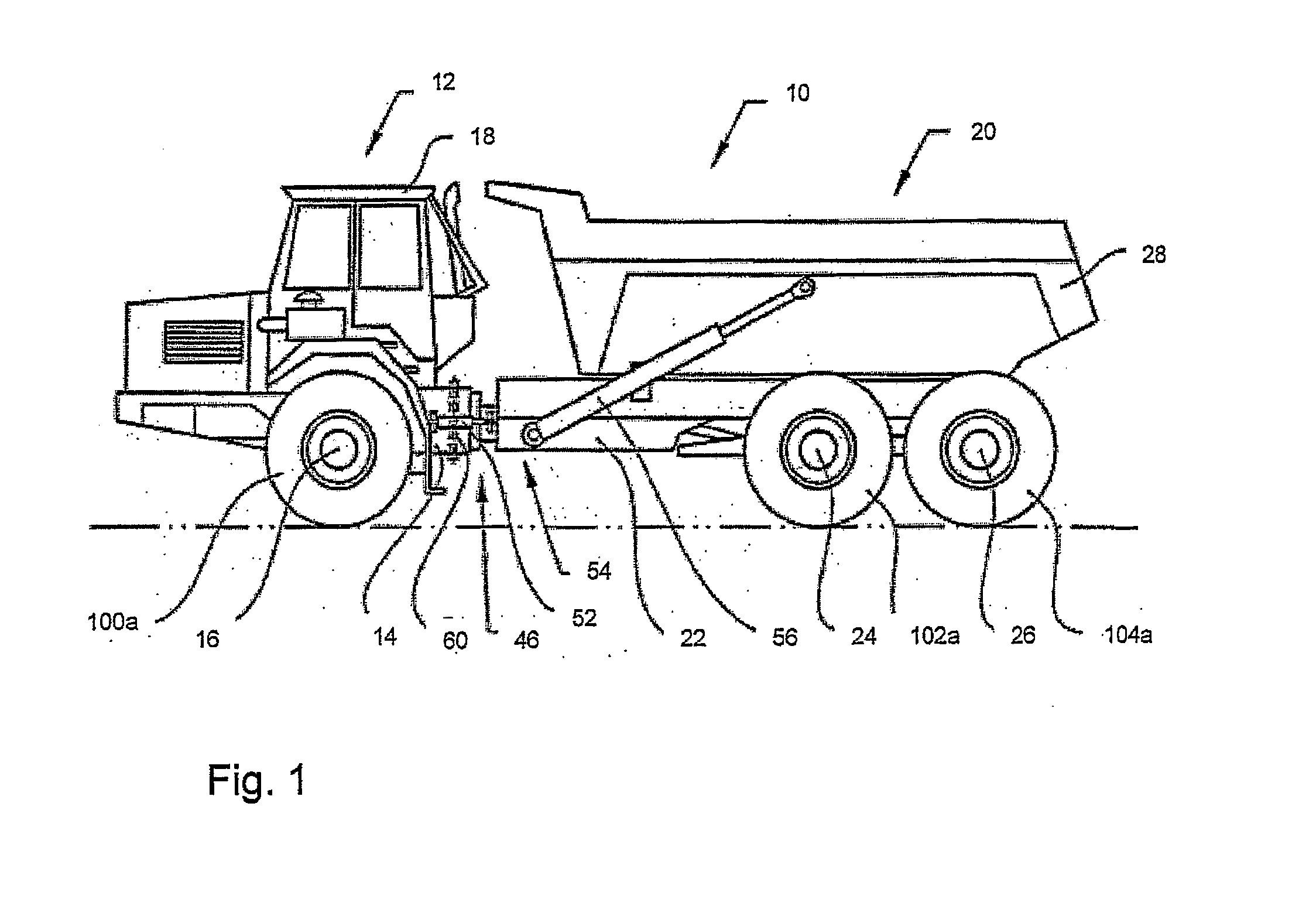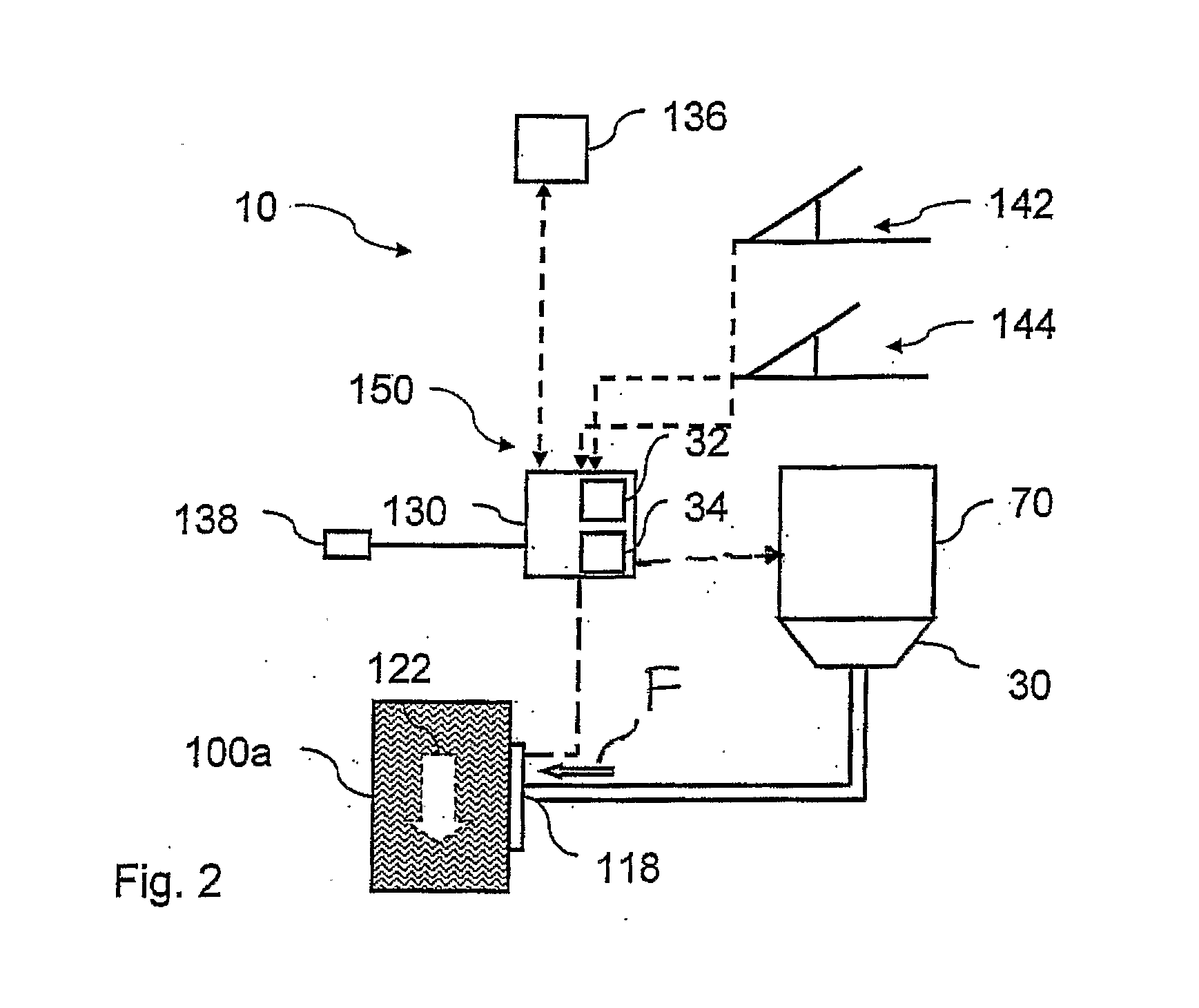Method and a system for testing the braking capacity of one or more brake elements of a vehicle
- Summary
- Abstract
- Description
- Claims
- Application Information
AI Technical Summary
Benefits of technology
Problems solved by technology
Method used
Image
Examples
Embodiment Construction
[0034]FIG. 1 depicts a side view of a vehicle 10 in the form of a frame-steered articulated hauler, to which the method according to the invention can be implemented for testing the brake system.
[0035]In the drawings, equal or similar elements are referred to by equal reference numerals. The drawings are merely schematic representations, not intended to portray specific parameters of the invention. Moreover, the drawings are intended to depict only typical embodiments of the invention and therefore should not be considered as limiting the scope of the invention.
[0036]The vehicle 10 embodied as a frame-steered articulated hauler comprises a front vehicle section 12 comprising a front frame 14, a front axle 16 and a cab 18 for a driver. The vehicle 10 also comprises a rear vehicle section 20 comprising a rear frame 22, a front axle 24, a rear axle 26 and a tiltable container 28.
[0037]The front and rear axles 24, 26 of the rear vehicle section 20 are connected to the rear frame 22 via ...
PUM
 Login to View More
Login to View More Abstract
Description
Claims
Application Information
 Login to View More
Login to View More - R&D
- Intellectual Property
- Life Sciences
- Materials
- Tech Scout
- Unparalleled Data Quality
- Higher Quality Content
- 60% Fewer Hallucinations
Browse by: Latest US Patents, China's latest patents, Technical Efficacy Thesaurus, Application Domain, Technology Topic, Popular Technical Reports.
© 2025 PatSnap. All rights reserved.Legal|Privacy policy|Modern Slavery Act Transparency Statement|Sitemap|About US| Contact US: help@patsnap.com



